The Employment Situation in September
Today’s jobs report shows the economy added 263,000 jobs in September, for an average monthly gain of 372,000 over the past three months. The number of jobs added in September came in around market expectations. Employment in July and August was revised up by a combined 11,000 jobs.
The unemployment rate declined to 3.5 percent. Labor force participation ticked down to 62.3 percent. Nominal wages rose by 0.3 percent in September and have risen by 5.0 percent over the last year.
- Average monthly job growth over the last three months was 372,000, a fast pace, but a slowdown from average job growth in the winter.
Job growth in July, August, and September averaged 372,000 jobs per month (Figure 1). Since monthly numbers can be volatile and subject to revision, the Council of Economic Advisers prefers to focus on the three-month average rather than the data in a single month, as described in a prior CEA blog.
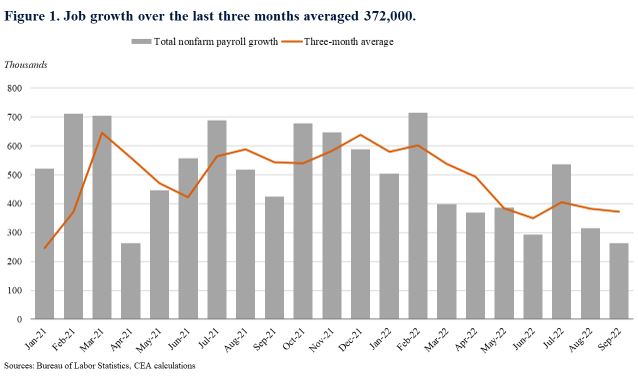
Employment in education and health services in the private-sector recovered to its pre-pandemic level in September.
2. During the pandemic recovery, the labor market has seen extraordinary job growth. As the recovery continues, monthly job growth will likely continue to slow.
So far in 2022, job growth has averaged 420,000 jobs per month. In contrast, from 2011 to 2019, job growth averaged about 194,000 jobs per month. Overall, the recovery from the pandemic recession has been much faster than is typical after recessions.
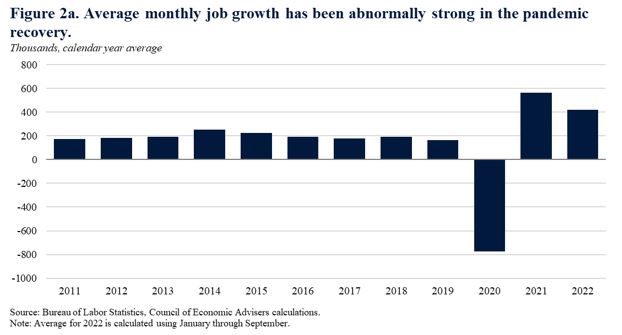
While it is unclear when the pace of job growth will reach a longer-term sustainable rate, it will likely continue to slow in the months to come. Indeed, during the later years of the recovery from the Great Recession, job growth was faster when the unemployment rate was higher. (As the jobless rate falls and the labor market closes in on full employment, the number of available workers begins to decline.) In 2019 alone, for example, the unemployment rate averaged 3.7 percent—slightly above where it was in September 2022—and payroll growth averaged 164,000.
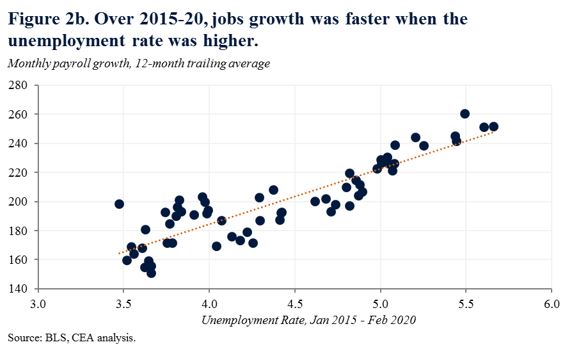
3. Monthly wage growth has largely been stable since February 2022.
Nominal average hourly earnings rose 0.3 percent over the month. Wage growth is still high relative to pre-pandemic, but it is lower than at the end of 2021 and has been somewhat stable since February 2022 (Figure 3). Adjusted for inflation, monthly wage growth in the most recent reports has been positive, although year-over-year real wage growth remains negative.
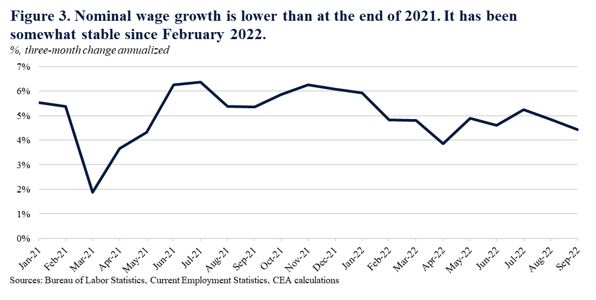
4. Labor force participation rates for both overall and prime-age (25 to 54) workers ticked down, but have seen solid growth over the last year.
Labor force participation ticked down to 62.3 percent. Prime-age participation also ticked down, although both measures have seen substantial recovery from their pandemic lows. Year-over-year, growth in labor force participation remains solid. Overall, the recovery in labor force participation has been relatively robust in this recovery compared to past recoveries.
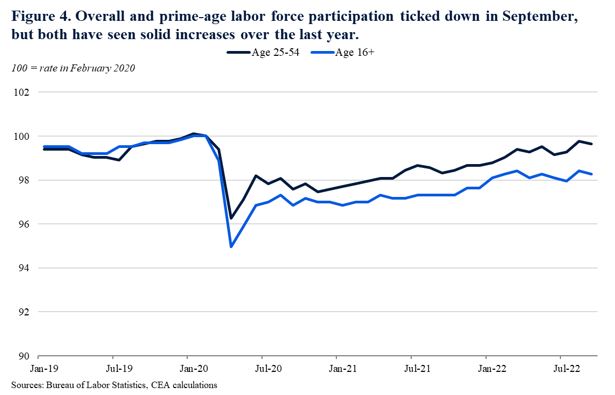
Labor force participation for prime-age women retreated in September after a strong increase in August, but remains near the pre-pandemic level. Labor force participation for prime-age men increased and is now nearing its pre-pandemic level. These data are volatile – looking at a three-month average shows the labor force participation rate rising for prime-age women and holding steady for prime-age men compared to the 3 months prior.
5. The unemployment rate generally declined across racial and ethnic groups in September, with the Hispanic unemployment rate reaching a new record low.
The Bureau of Labor Statistics reports unemployment rates for demographic groups, but only some of those rates are seasonally adjusted (which allows for month-to-month comparisons). Across racial and ethnic groups where the unemployment rate is seasonally adjusted, every group saw a decline in September. The meaningful decline for Hispanic workers resulted in a new record low unemployment rate.
However, these data are volatile – looking at a three-month average shows these unemployment rates largely holding steady or ticking down compared to the average in August.
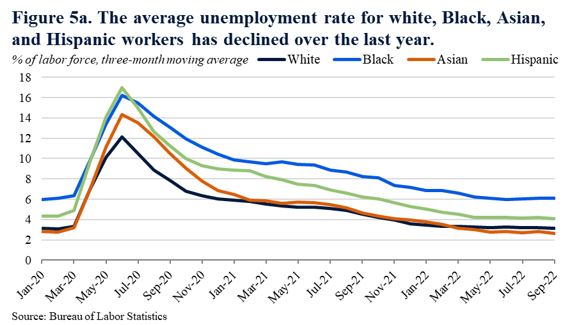
The Bureau of Labor Statistics has also started reporting the unemployment rate for workers who are American Indian or Alaska Native, Native Hawaiian or Other Pacific Islander, or identify as being of two or more races, but these unemployment rates are not seasonally adjusted. Looking at the twelve-month moving average, these groups have also seen a decline in their unemployment rate over the last year, although some saw a monthly uptick in September.
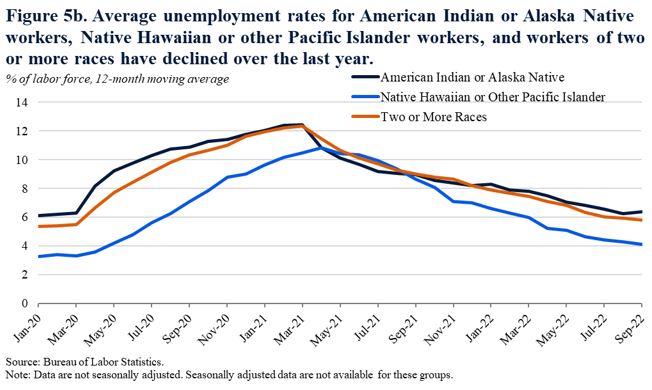
As the Administration stresses every month, the monthly employment and unemployment figures can be volatile, and payroll employment estimates can be subject to substantial revision. Therefore, it is important not to read too much into any one monthly report, and it is informative to consider each report in the context of other data as they become available.

